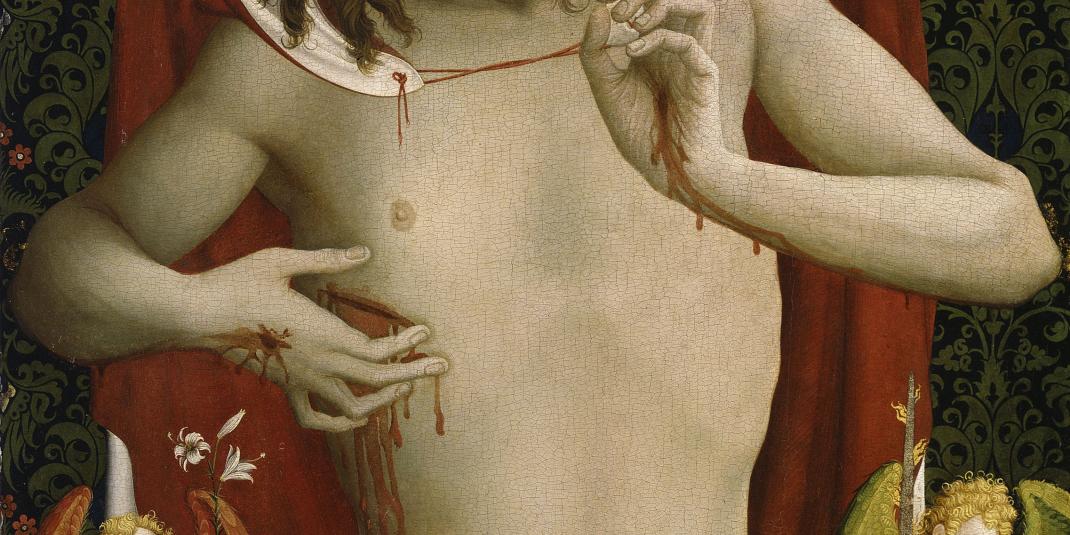
MAN SON 1969
The exhibition MAN SON 1969. The Horror of the Situation explores the lure and danger of extremes. It takes as its starting point a series of historical events in aesthetics and politics, lifestyle and counterculture in the 1960s, the significance of which is a subject of continuing heated debate. Twenty international contemporary artists have been invited to look back at the events of 1969 and contribute new works that articulate the ambivalence of extremes in that era of far-reaching social transformation. These contemporary positions will be juxtaposed with three paintings from different historical eras, including Master Francke’s Christ as the Man of Sorrows and George Grosz’s John the Sex Murderer. Charles Manson, a central figure of American hippie culture, is believed to have instigated the murders of Sharon Tate and six other people, a crime for which he is currently serving life in prison. As the subject of intense and controversial media interest, the name and persona of Charles Manson provide a framework for the context of the exhibition as a whole.
The middle of the twentieth century was marked by colonial conflict and liberalisation on a worldwide scale. The unprecedented war in Vietnam gave rise to a massive protest movement across Europe and America that sought not only political change but also new, more liberal ways of life. The year 1969 above all was a time of strong contradictory tendencies in society as a whole and particularly in protest culture. Notable events during that year included not only the first moon landing on 20 July but also the sudden change in public opinion on the Vietnam War.
The invited artists examine the theme of the exhibition – the ambivalence of extremes around 1969 – from a contemporary point of view and touch only marginally upon the figure of Charles Manson and the events surrounding him. They develop a variety of different perspectives, focussing for example on the consideration of group formation as a dialectic of freedom and constraint, the analysis of manipulation, education and conformity, the musical background of the period or the creation of myths as a quasi-religious phenomenon.
The title of the exhibition is borrowed from Manson himself, whose portrait appeared on the cover of Life Magazine in 1969 and who remains a subject of media interest and debate to this day. For around two and a half years – from late 1967 until 1969 – Manson lived with his so-called ‘family’ in a kind of rural commune in California. He is believed to have incited the murders of Sharon Tate and at least six other people in Hollywood. He justified these actions with a paranoid, imagined threat of a race war he called ‘Helter Skelter’ after the Beatles song of the same name. Following a six-month manhunt, Manson and five of his followers were sentenced to death for mass murder. Due to the temporary abolition of the death penalty in California (1972–1977), however, the sentence was commuted to life imprisonment with no possibility of parole. Manson is currently detained in the maximum security Corcoran State prison in California. The term ‘Man Son’ is a variant spelling Manson himself used for a time.







